Ohio is a state with a rich history, and its oldest cities are a testament to that history. From Marietta, the first settlement in the Northwest Territory, to Cleveland, a major industrial and cultural center, Ohio’s oldest cities have played important roles in the state’s development. These cities were founded in the late 18th and early 19th centuries, during a time of westward expansion and growth in the young United States. Today, they continue to be vibrant cultural and economic centers, with historic landmarks, museums, and other attractions that offer a glimpse into the state’s past. In this article, we will take a closer look at the 15 oldest cities in Ohio and explore their unique histories and contributions to the state.
1. Marietta
Marietta, founded in 1788, holds the distinction of being the oldest city in Ohio. The settlement was established by a group of American pioneers who had served in the American Revolutionary War and had been given land grants in the Ohio Valley by the U.S. government. Marietta was named after Queen Marie Antoinette of France, who had provided significant support to the American colonists during the Revolution.
You may also like: Top 10 Richest Counties in the US

The settlement’s location at the confluence of the Muskingum and Ohio Rivers made it a strategic point for westward expansion and trade. Marietta’s founders, including General Rufus Putnam, created a planned town, which became a model for other settlements in the Midwest. Today, Marietta is a picturesque town with a rich history and numerous landmarks, including the Campus Martius Museum, the Ohio River Museum, and the Marietta Earthworks, a prehistoric Native American site.
2. Cincinnati
Cincinnati, founded in 1788, is the second-oldest city in Ohio. It was established by a group of settlers led by John Cleves Symmes, who had purchased land in the region from the U.S. government. The settlement was originally named “Losantiville,” a name that combined elements of the Latin, French, and English languages, but it was later changed to Cincinnati in honor of the Society of the Cincinnati, a group of Revolutionary War officers. The new name was chosen to reflect the settlers’ patriotism and the city’s aspirations to become a center of commerce and culture.
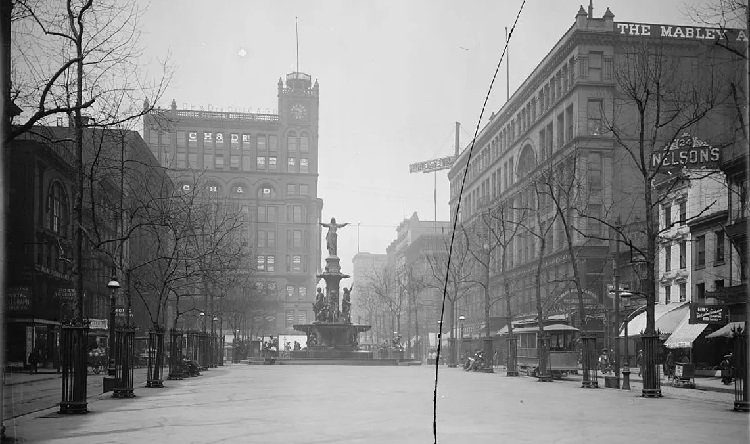
Cincinnati’s location on the Ohio River made it an important transportation hub, and it soon became a major industrial and commercial center. In the mid-19th century, the city became known for its pork processing industry and earned the nickname “Porkopolis.” Today, Cincinnati is a vibrant city with a rich cultural heritage, a thriving arts and music scene, and many historic landmarks, including the John A. Roebling Suspension Bridge and the Cincinnati Music Hall.
3. Gallipolis
Gallipolis, founded in 1790, is the 3rd-oldest city in Ohio. The city was settled by a group of French immigrants who were seeking refuge from the chaos and violence of the French Revolution. They were led by a French nobleman named Count Jean-Joseph de Barth, and upon arrival, they named their new settlement “Gallipolis,” which is derived from the French phrase “la ville de la paix,” meaning “city of peace.”

The settlers were given land grants by the United States Congress, which had sympathized with their plight, and they set about establishing a new community on the banks of the Ohio River. Gallipolis grew slowly in the early years and was affected by a series of floods and other natural disasters in the 19th century. However, the city eventually recovered and became an important center of commerce and trade in southeastern Ohio. Today, Gallipolis is a charming small town with a rich history and many unique cultural attractions, including the Ariel Theatre and the Ohio Valley Symphony.
4. Chillicothe
Chillicothe, founded in 1796, is the 4th-oldest city in Ohio. The settlement was established by Nathaniel Massie, a pioneer, and surveyor who had received a land grant from the U.S. government. Chillicothe’s name is derived from the Shawnee word “Chala’ka’theki,” which means “principal town” or “big town.” The city became Ohio’s first capital in 1803 when Ohio became a state, and it served as the state capital until 1810 when the capital was moved to Zanesville.

During its time as the capital, Chillicothe was an important center of government and politics, and many of Ohio’s early laws and institutions were established there. The city’s location on the Scioto River made it an important transportation hub and helped it to develop as a center of trade and commerce. Today, Chillicothe is known for its rich history and many historic sites, including the Adena Mansion and Gardens, the Chillicothe Paints baseball team, and the annual Feast of the Flowering Moon festival, which celebrates the city’s Native American heritage.
5. Cleveland
Cleveland, founded in 1796, is the 5th-oldest city in Ohio. The city was named in honor of General Moses Cleaveland, who led a surveying party to the area in 1796. Cleaveland was a lawyer and politician from Connecticut who played a key role in the development of the Connecticut Western Reserve, a region in northeast Ohio that had been ceded to Connecticut by the federal government. The settlement that grew up around the surveying party became known as Cleaveland, but the spelling of the name was later changed to Cleveland for simplicity’s sake.
See also: Top 6 Most Famous US National Monuments

Cleveland’s location on the shores of Lake Erie and the Cuyahoga River made it an important center of transportation and trade in the early days of the American West. Today, Cleveland is known for its rich cultural heritage, which includes contributions to music, literature, and the arts, as well as its many distinctive landmarks and attractions, such as the Cleveland Orchestra, the West Side Market, and the Rock and Roll Hall of Fame.
6. Dayton
Dayton, founded in 1796, is the 6th-oldest city in Ohio. The settlement was named after Jonathan Dayton, a Revolutionary War officer and one of the signers of the U.S. Constitution. Dayton was established on the banks of the Great Miami River and was initially a small village centered around agriculture and trade. However, the city grew rapidly during the Industrial Revolution, particularly in the late 19th and early 20th centuries, when it became a center of manufacturing and innovation.

Dayton was home to many pioneering companies in the fields of aviation, automobiles, and electronics, and it played a key role in the development of American technology and industry. Today, Dayton is a major city in southwest Ohio with a diverse economy, a rich cultural heritage, and many notable attractions, including the National Museum of the United States Air Force, the Dayton Art Institute, and the Dayton Dragons minor league baseball team.
7. Steubenville
Steubenville, founded in 1797, is the 7th-oldest city in Ohio. The city was established by Bezaleel Wells, a surveyor and land agent, and James Ross, a lawyer, and investor. The settlement was originally named La Belle, but it was later renamed Steubenville in honor of Fort Steuben, a military fort that had been established nearby during the American Revolution. The fort was named after Baron Friedrich Wilhelm von Steuben, a Prussian general who had served in the Continental Army and played a key role in training American troops.
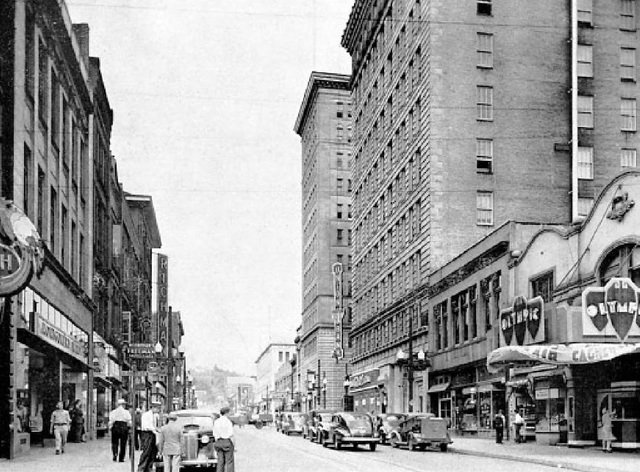
Steubenville’s location on the Ohio River made it an important transportation and commercial center, and the city soon became a hub for shipping, manufacturing, and trade. Today, Steubenville is known for its historic architecture, including many well-preserved Victorian homes, as well as its vibrant arts community and cultural events such as the Ohio Valley Frontier Days festival.
8. Zanesville
Zanesville, founded in 1799, is the 8th-oldest city in Ohio. The settlement was named after Ebenezer Zane, a prominent American pioneer who was responsible for building the Zane Trace, a frontier road that connected Wheeling, West Virginia, to Maysville, Kentucky. Zane’s road was instrumental in opening up the western frontier to settlers, and Zanesville quickly grew into an important center of commerce and transportation. The city’s strategic location on the banks of the Muskingum River made it an ideal hub for trade and shipping, and it became a major center of pottery production in the 19th and early 20th centuries.
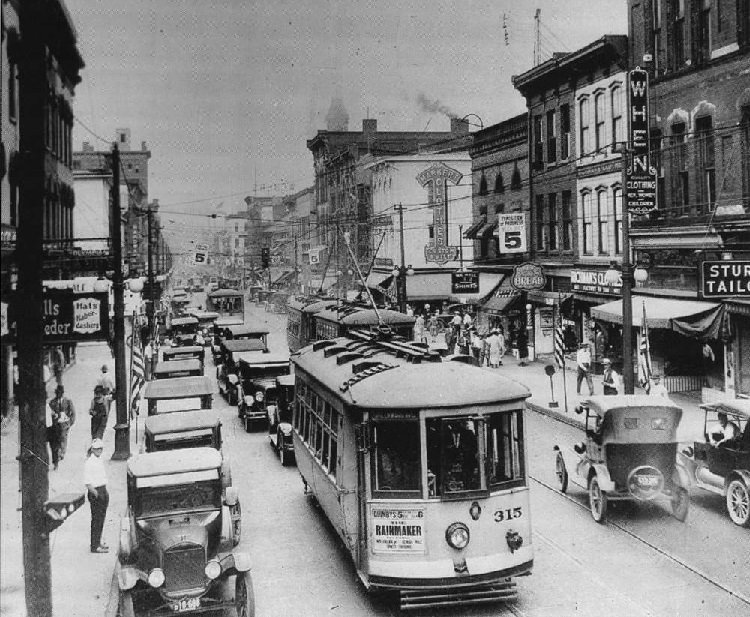
Today, Zanesville is a thriving city in southeastern Ohio, with a rich history and a diverse economy that includes manufacturing, healthcare, and education. Visitors to the city can explore a variety of historic sites and attractions, including the Zane Grey Museum, the Muskingum River Parkway, and the Y-Bridge, a unique three-way bridge that spans the confluence of the Licking and Muskingum Rivers.
9. Lancaster
Lancaster, founded in 1800, is the 9th-oldest city in Ohio. The city was named after Lancaster, Pennsylvania, which was a major center of commerce and culture in the early years of the United States. Like its namesake, Lancaster, Ohio, grew rapidly in the 19th century, as settlers from the east flocked to the area in search of new opportunities. The city was an important stop on the Ohio and Erie Canal, which brought goods and people to and from the Great Lakes region, and it was also an important center of agriculture and manufacturing.
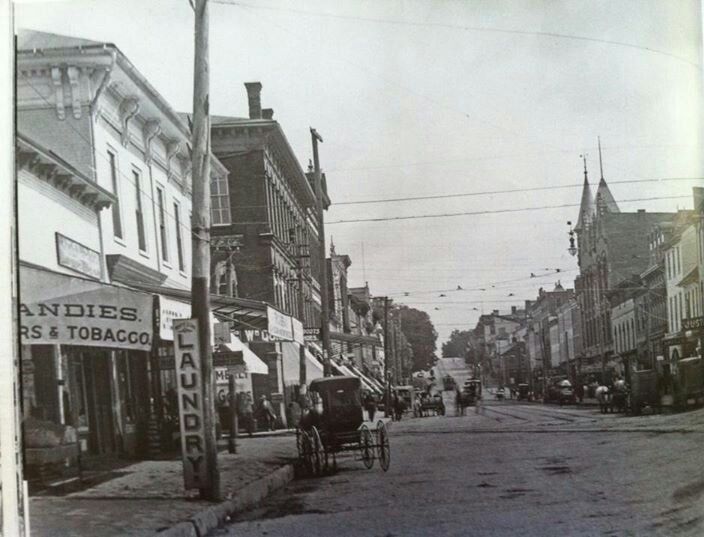
Today, Lancaster is a charming small city with a rich history and a thriving arts and culture scene. Visitors can explore a variety of historic sites and museums, including the Sherman House Museum, the Georgian Museum, and the Decorative Arts Center of Ohio. The city is also home to a variety of outdoor recreation opportunities, including hiking, fishing, and boating at nearby parks and lakes.
10. Springfield
Springfield, founded in 1801, is the 10th-oldest city in Ohio. The city was named after Springfield, Massachusetts, which was an important center of commerce and culture in the early years of the United States. Like its namesake, Springfield, Ohio, grew rapidly in the 19th century, as settlers from the east flocked to the area in search of new opportunities. The city was an important center of manufacturing and transportation, with industries ranging from agricultural machinery to automobiles.
See also: Top 15 Worst Floods in US History
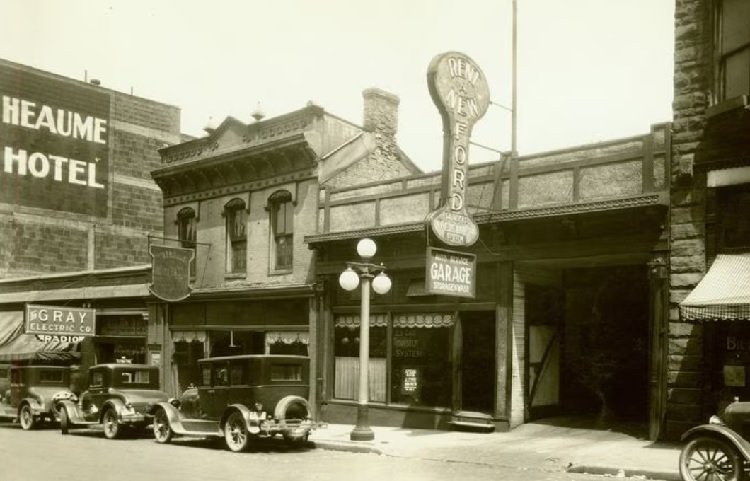
Today, Springfield is a vibrant city with a diverse economy that includes healthcare, education, and manufacturing. Visitors to the city can explore a variety of historic sites and attractions, including the Westcott House, a Frank Lloyd Wright-designed home, the Heritage Center Museum, and the Hartman Rock Garden, a unique folk art installation. The city is also home to a variety of parks and outdoor recreation areas, including Buck Creek State Park and the Little Miami Scenic Trail, a popular biking and hiking trail that runs through the heart of the city.
11. Newark
Newark, founded in 1802, is the 11th-oldest city in Ohio. The city was named after Newark, New Jersey, which was an important center of commerce and industry in the early years of the United States. Like its namesake, Newark, Ohio, grew rapidly in the 19th century, as settlers from the east flocked to the area in search of new opportunities. The city was an important center of manufacturing and transportation, with industries ranging from textiles to glassmaking.

Today, Newark is a thriving city with a diverse economy that includes healthcare, education, and manufacturing. Visitors to the city can explore a variety of historic sites and attractions, including the Great Circle Earthworks, a prehistoric site that is part of the Hopewell Culture National Historical Park, and the Works Museum, which tells the story of the city’s industrial heritage. The city is also home to a variety of parks and outdoor recreation areas, including the Dawes Arboretum, a beautiful natural area that features a wide variety of trees and plants from around the world.
12. Portsmouth
Portsmouth, founded in 1803, is the 12th-oldest city in Ohio. The city was named after Portsmouth, New Hampshire, which was an important center of trade and shipping in the early years of the United States. Like its namesake, Portsmouth, Ohio, grew rapidly in the 19th century, as settlers from the east flocked to the area in search of new opportunities. The city was an important center of industry and transportation, with industries ranging from ironworks to shipbuilding.
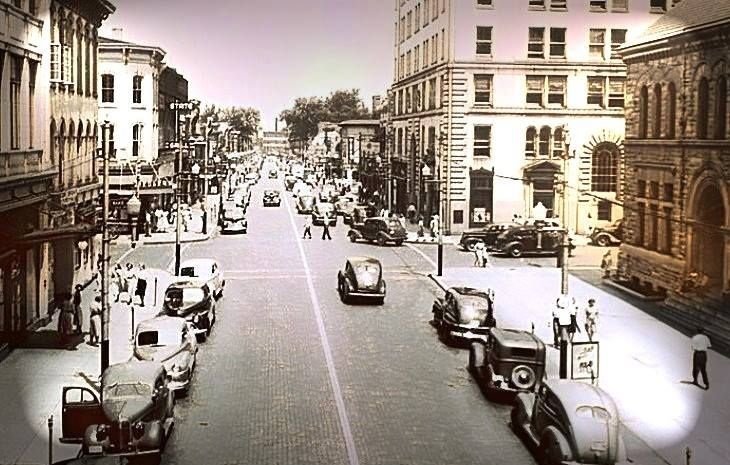
Today, Portsmouth is a vibrant city with a diverse economy that includes healthcare, education, and manufacturing. Visitors to the city can explore a variety of historic sites and attractions, including the Portsmouth Floodwall Murals, a series of murals that tell the story of the city’s history, and the Southern Ohio Museum, which features a variety of exhibits and collections that celebrate the culture and heritage of the region. The city is also home to a variety of parks and outdoor recreation areas, including Shawnee State Park, a popular destination for hiking, fishing, and boating.
13. Athens
Athens, founded in 1804, is the 13th-oldest city in Ohio. The city was named after Athens, Greece, which was the center of ancient Greek civilization and culture. Like its namesake, Athens, Ohio, is home to a vibrant arts and cultural scene, as well as a number of historic sites and attractions. The city is perhaps best known as the home of Ohio University, which was founded in 1804 and is the oldest university in the state.
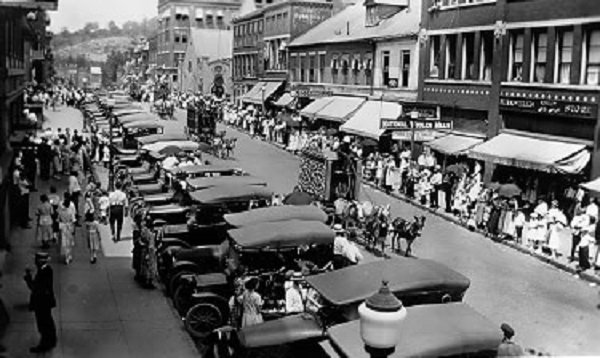
Today, Ohio University is a major center of higher education, with a diverse range of programs and research initiatives. Visitors to Athens can explore a variety of historic sites and attractions, including the Athens County Historical Society and Museum, which features exhibits and collections that tell the story of the region’s history and heritage. The city is also home to a variety of parks and outdoor recreation areas, including Strouds Run State Park, a popular destination for hiking, fishing, and boating.
14. Canton
Canton, founded in 1805, is the 14th-oldest city in Ohio. The city was named after Canton, China, which was one of the major ports of the Silk Road trade route and an important center of trade and commerce in ancient China. Similarly, Canton, Ohio, was also an important center of industry and commerce, particularly in the steel and manufacturing sectors. The city is perhaps best known as the birthplace of professional football and the home of the Pro Football Hall of Fame, which attracts thousands of visitors each year.
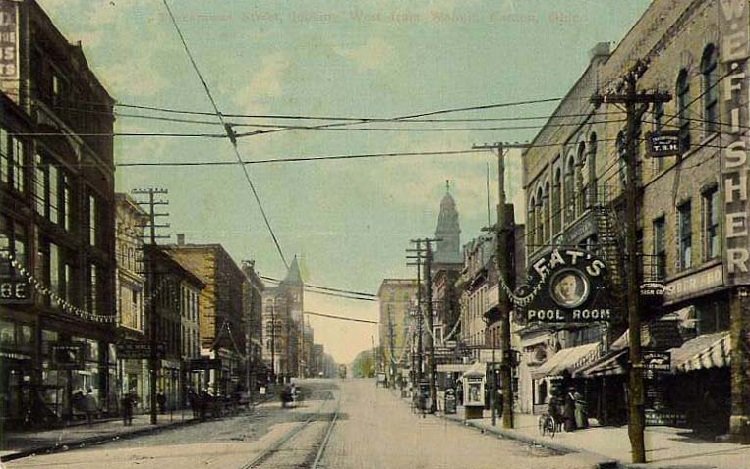
Canton is also home to a variety of other cultural and recreational attractions, including the Canton Museum of Art, the McKinley Presidential Library and Museum, and the Stark County Fairgrounds, which hosts a variety of events and activities throughout the year. Additionally, the city is surrounded by a variety of parks and outdoor recreation areas, including the McKinley National Memorial, a historic site and park that honors the legacy of President William McKinley.
15. Wooster
Wooster, founded in 1808, is the 15th-oldest city in Ohio. It was named after General David Wooster, a Revolutionary War hero who was known for his bravery and leadership during the conflict. The city is located in Wayne County, in the northeastern part of the state, and is home to a population of around 26,000 people. Wooster is perhaps best known for its thriving agricultural industry, which produces a variety of crops, including corn, wheat, and soybeans.
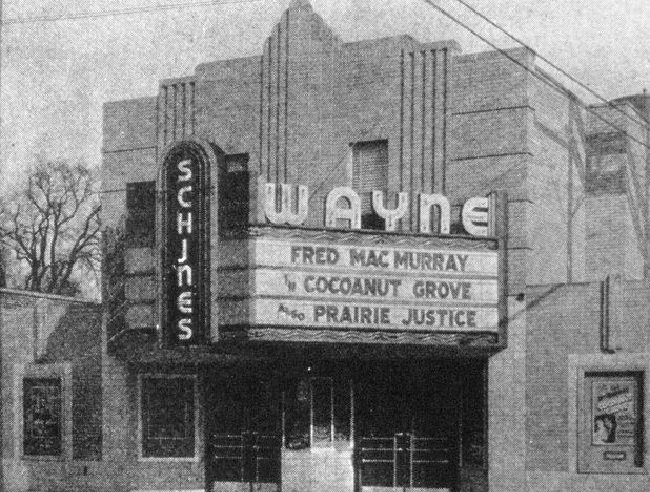
The city is also home to the College of Wooster, a prestigious liberal arts college that has been ranked among the top 75 liberal arts colleges in the United States by U.S. News & World Report. In addition to its agricultural and educational offerings, Wooster is also home to a variety of cultural and recreational attractions, including the Ohio Light Opera, which hosts a variety of performances and productions throughout the year, and the Secrest Arboretum, which features a wide variety of trees, shrubs, and other plants from around the world.
Conclusion
Ohio is a state steeped in history, and its oldest cities serve as a testament to the rich heritage and diverse cultures that have helped shape the Buckeye State over the years. From Marietta, the state’s oldest city, to Gallipolis, its fifteenth-oldest, each city has a unique story to tell and a distinct character all its own. From the French settlers of Gallipolis to the industrialists of Cleveland, these cities have played a crucial role in Ohio’s development, and they continue to be vibrant and dynamic communities that offer a wealth of cultural, educational, and recreational opportunities to visitors and residents alike. Whether you’re interested in history, nature, or the arts, the 15 oldest cities in Ohio have something for everyone to enjoy.
